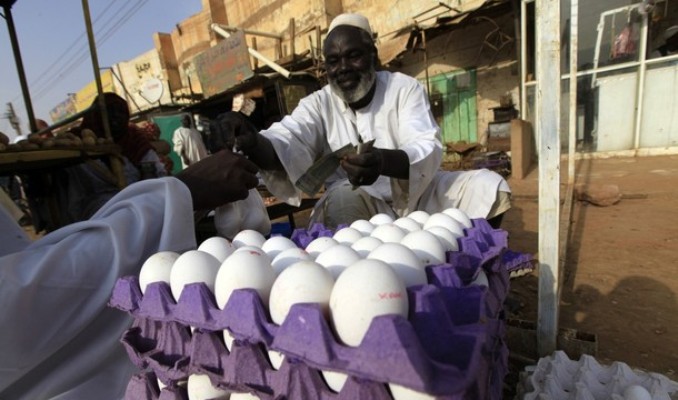Sudan’s inflation rate rises to 33,7% in 2017 first quarter

May 30, 2017 (KHARTOUM) – Sudan’s inflation rate has jumped to 33,7% in the first quarter of 2017, compared to 12.3% for the same period last year, an increase of more than 260%, said Finance Minister
The newly appointed Finance Minister Mohamed al-Rikabi, in his first appearance before the parliament Monday, attributed the increase in inflation rate to the impact of the fiscal policy reforms implemented by the government at the end of last year.
In November 2016, Sudanese government lifted fuel subsidies and increased electricity price in a bid to control a surge in inflation and stop the fall of Sudanese pound in the black market.
Al-Rikabi predicted that the Gross Domestic Product (GDP) would reach about 872 billion pounds (SDG) in 2017, compared to 694 bn. last year, a growth rate of 5.3%.
He pointed out that the public revenues amounted to 17.1 bn. Pounds (SDG) with performance rate of 88% of the weighted proportional estimates for 2017, a growth rate of 38%.
The minister announced that money supply rose during the first quarter of this year by 11.9%, compared to 7.6% for the first quarter of last year.
He pointed to the decrease in the trade balance deficit in the first quarter of this year to $684 million compared to $1.2 billion for the same period last year.
According to al-Rikabi, the GDP at current prices reached 694 bn. pound (SDG) in 2016 compared to 583 bn. in 2015.
He further said last year’s growth rate was 1.4%, compared to 17.8% average inflation rate in 2016.
Last year, the Central Bank of Sudan introduced an incentive policy, increasing the exchange rate in commercial banks by 131%. As a result, the U.S. dollar exchange rate went up in banks to 15.8 SDG from the official rate of 6.5 SDG.
However, the dollar price in the black market stood at 18,3 pounds (SDG).
Projected deficit in Sudan’s 2017 budget is estimated at 2,1% of the GDP compared to 1,6% in 2016.
According to the budget, the growth rate would decline from 6,4% in 2016 to 5,3% and the targeted average inflation rate is 17%.
Prices and services have soared in Sudan since South Sudan seceded in 2011, taking with it three-quarters of the country’s oil output, the main source of foreign currency used to support the Sudanese pound.
The Sudanese pound has lost 100% of its value since South Sudan’s secession, pushing inflation rates to record levels given that country imports most of its food.
Ordinary citizens continue to complain from cost of living increases that impaired their access to basic commodities.
(ST)
